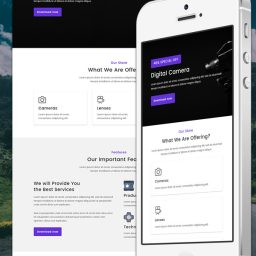Few things are as important to digital marketing agencies as their revenue pipeline. While many of us really want to concentrate on creative and technical things in our daily work, we simply have to think about revenue. It’s what keeps the doors open. This post seeks to help agency owners understand their pipeline, understand and optimize the mix of revenue components, and manage the whole thing.
Most agencies have three different kinds of revenue:
- Contract revenue,
- subscription/retainer revenue, and
- ad hoc revenue
Each very different. Unfortunately, a lot of agencies really focus on contract revenue without understanding the need for each component and the benefits of a balanced mix.

Contract Revenue
Without a doubt, development and design contracts are the glamour children of digital marketing agencies: they’re big ticket items, they get our creative juices going, and—when done well—can really help with marketing our work.
Agencies everywhere focus on contracts for all those reasons, but do they do them right? All legalese, statements of work, and schedule details aside, are you managing the revenue aspect of contracts correctly?
Up-front Revenue
There are a number of types of “up-front” revenue approaches used by agencies for contract work. Some charge a proposal fee, at times rebated against contract costs if an agreement is signed. For sure there is cost involved in producing a good proposal, and your agency should recover it somewhere.
Most agencies request a down payment for contract work. My agency always does. We request down payments of between 50% and 75%, depending on the length of the engagement. Some prospects will object to this. When that happens, we try to explain that so much time is spent early in the concept/design stage of the project that we need a financial commitment in order to allocate the resources.
We have still had prospects balk at a down payment after explaining its reason; we consider those to be “red flags” and never work with them.
Progress-based Revenue
In longer projects, where milestones that have been defined around key elements of the project that are approved by the client, many agencies seek a milestone or progress payment. It can accompany approval of a design wireframe, a branding scheme, or completion of some other notable stage of the project.
Clients are usually fine with milestone payments; they understand the correlation between progress and payment for it. (We do put language in our contracts allowing us to go ahead and invoice if client approval is delayed. It is something that we find helps our clients prioritize the milestone sign-off).
The Final Payment
It amazes me how often I hear that an agency is willing to turn a client website live without receipt of the final payment. It is not about whether we as businesspeople trust our clients to ante up once they’re up and going, most will. It’s the philosophy that our agency deserves to be compensated when it creates the value for the client, and the only way we retain leverage is by waiting to go live until after we’ve received that.
And again, we try and operate with a value-oriented philosophy. Once we’ve created the value for the client, we want to be paid. Most clients understand that and are fine with it.
Properly Accounting for Project Revenue
This post is not being written by an accountant, nor will reading it replace yours. In fact, I recommend you specifically address some of the issues raised here with him/her. Project revenue is just such a subject to get advice on.
You want to look at how you should handle purchased items, payments to subcontractors, how revenue should be allocated over the project, and so on.
Houston Chronicle: How To Allocate Revenue
Wall Street Journal: SEC Crackdown on ‘Adjusted’ Accounting

Revenue from Subscriptions and Retainers
While these two types of agency revenue are different, they have two important similarities so we’ve grouped them together. Subscriptions and retainers create both resource allocations and revenue allocations.
In other words, by accepting this kind of business, you’ve agreed to set aside future work capacity in return for today’s revenue, and to do an accurate job of accounting, you must allocate portions of the revenue to future periods.
Perhaps more importantly, this kind of business also represents recurring revenue, a huge component of any successful business. Recurring revenue (anyone in the insurance business can tell you) is critical to smooth cash flow. It fills in the cracks between the large revenue blips that come from contract work.
Recurring revenue is also easier to forecast, making for more accurate resource allocations and staffing plans. But the biggest benefit to recurring revenue is a lower cost of sale: renewals are much easier to get than it is to find new business.
Retainers
Our agency does not work on retainer, but many do. We have found that a retainer relationship with a client can lead to misunderstandings about what services have been provided for the monies paid. In other words, if you do offer to work this way with clients, ensure you have a great deal of transparency built into it. Make sure the client knows what they are paying for.
Renewals and Reporting
When you’re in any business where you take money on one day, and then deliver services out into the future, you are at risk of clients not being able to associate their payment with the services they receive for it. And that spells death for repeat business.
So if you’ve chosen to put clients on retainer or to offer services on subscription, then you’ll need a sharp focus on the “two R’s”: reporting and renewals. They’re intimately tied together: the better job you do of reporting, the greater percentage of renewal business you’ll get.
And it stands to reason that if you don’t do a good job of telling clients what they’ve received for their money, you won’t be getting that money in the future.
We recommend reaching out periodically to clients to remind them of what their subscribed services are doing for them—not waiting until you are seeking a renewal commitment.
Accounting for Subscription Revenue
This is another one for your accountant: how to account for subscription revenue. We use an allocated revenue model, but you should ask a professional as to the best approach for your business.

Managing and Understanding Ad Hoc revenue
Many things come under this heading, but they’re all just unplanned revenue. A great client calls you in a panic; something’s happened to their site and asks if you can help. A prospect would like something small done to get a sense of what it’s like to work with your team. Another agency has overflow work during a slow time for you. These are all ad hoc work, and they help pay the bills like anything else.
But what’s the best way for your agency to handle these opportunities? Take them, and gladly. But approach them a bit differently. We recommend charging a bit higher labor rate for this kind of work, perhaps 10%-20%. We also recommend trying to limit the total amount of ad hoc work to around 10% of your business.
Why do we recommend charging more for this kind of work? Quite frankly, because it will drive your clients toward other business arrangements with your firm that are of more benefit to you.
And, why do we recommend that limit? Since this revenue isn’t very easy to forecast, you really can’t count on it unless you have very good data that points to a historical level of business. And if you can’t count on it, you can’t really afford to keep resources in place to work on it.
How To Allocate Project Resources Effectively
Optimizing Your Revenue Mix
While there are individual things your agency should do to manage each type of revenue, the overarching concept is a good balance. In other words, you don’t want it to be simply contract revenue—or any other one type—that your agency counts on. So, why is that?
Each type of revenue has its advantages and disadvantages in terms of revenue planning and workload balancing, and an appropriate mix of them will serve your business best.
Optimally you will want to find a mix that contains a good balance of contract work (to keep your design resources busy) and subscription revenue (to maintain good cash flow), with a little ad hoc work thrown in as a reflection of reality.
And, as your recurring revenue grows, you can devote more time to business development in the contracts area, knowing that at least some of your future operating costs are covered.
We look for the recurring component to be 30-35% of our total revenue, although there’s no hard and fast rule.
Modern Finance in the Digital Age
And, “The Big Win”
In our business development activities, we always try for what we call “the big win” and this brings me to a story. More years ago than I’d care to admit, I learned an important business lesson from a boss when we were struggling with how to grow our business in a tough market. His comment—and it stuck with me—was that the easiest way to grow sales was to sell more to folks we were already selling to.
This is surprisingly simple, yet so often it is not considered in business development discussions. Why I mention it here is because it’s our way of trying to drive an optimal revenue mix from the very beginning of the client relationship.
Most of you have heard the term “upsell”, and that’s what we’re really talking about. For every client that engages us to develop a site, we offer a package deal that bundles social media, blogging, and site support with the site development—with those add-on services very attractively discounted, if agreed to at the time the contract is signed.
Frankly it’s a win-win scenario: we get a commitment to much more business up-front, and, beyond the discount, the client gets a turnkey package that takes care of a huge chunk of their digital marketing. In fact, many clients tell us that this approach makes it much easier to budget for their marketing costs.
You Have to Manage Your Revenue Mix
None of us began agencies because we loved paperwork; but, everyone who has the responsibility of running one knows how important revenue is. By properly managing your agency’s mix, you will smooth out cash flow, do a better job of allocating resources (and keeping them busy), and ultimately improve the bottom line.
Work hard on growing recurring revenue for your business to take pressure off cash flow. Propose turnkey solutions to contract clients to help foster an ongoing income stream and a long-term business relationship. Be transparent about the services being provided under retainer or subscription arrangements.
Your business will thank you.











